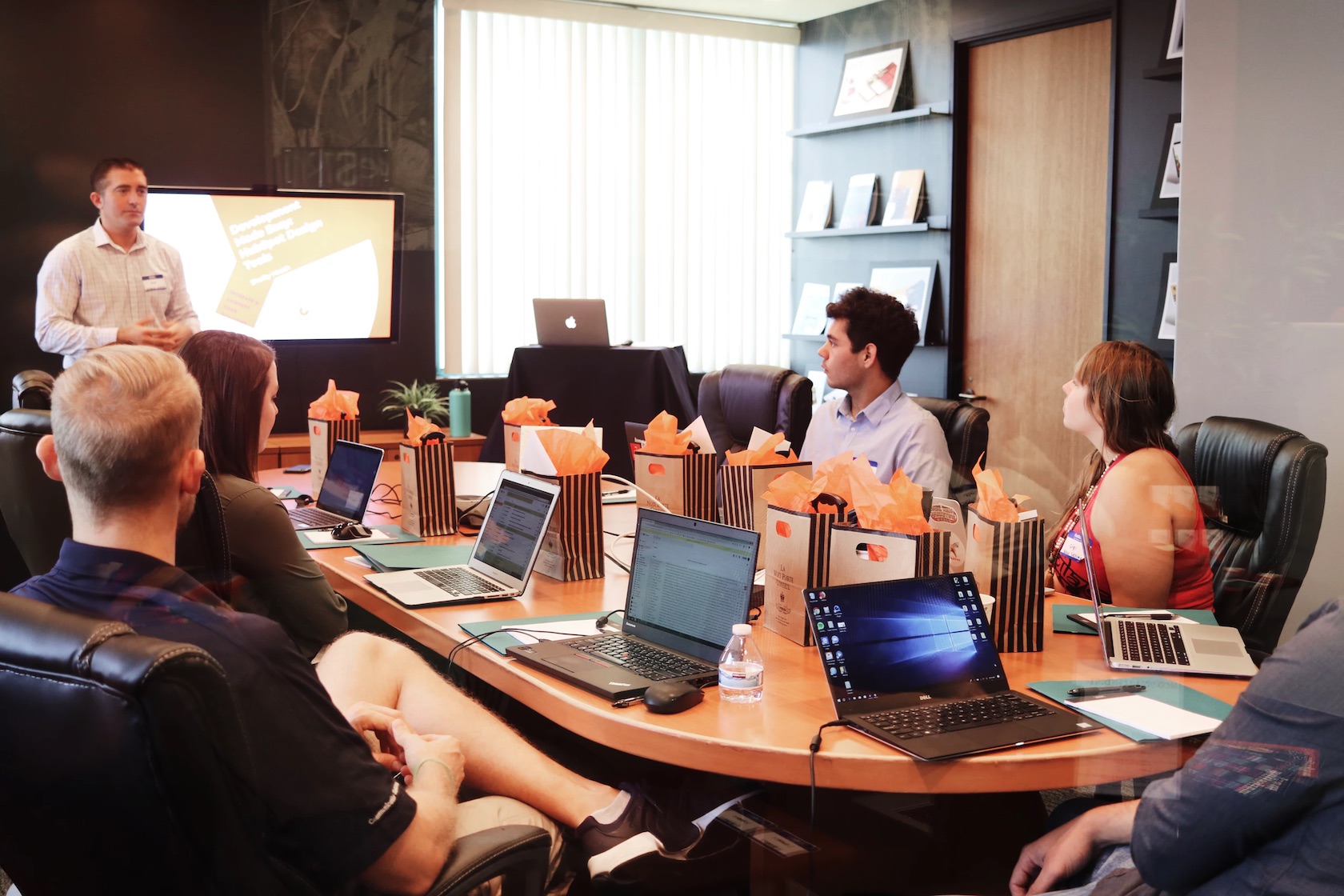How to Recruit UX Research Participants
Finding the right UX research participants can result in valuable insights even from a mediocre UX testing plan. UX researchers should spend the time to identify and find the right participants.
Finding the right UX research participants can result in valuable insights even from a mediocre UX testing plan. UX researchers should spend the time to identify and find the right participants.
James fuses cognitive science techniques with clever interaction design to make products people love.
Expertise
PREVIOUSLY AT

It’s a risk to a company’s bottom line to have engineers ship and market a product based on guesswork. Recruiting the right UX research participants is a vital early step in the overall UX research process. Nevertheless, as important as it is, it presents certain challenges that researchers need to be prepared to face and overcome.
In addition, recruiting quality users is crucial for delivering a trustworthy UX research report. If the users tested aren’t the target users, the quality of the insights in the report amount to nothing more than speculation.
User Research Recruiting Is Like a Sales Pipeline
The process of recruiting participants for UX research is effectively a sales pipeline. And like any good salesperson, UX researchers need to focus on building relationships first.
Researchers should beware of looking at the recruiting process as transactional. Forming relationships with UX research participants is key to getting the kind of feedback necessary to create spectacular products. At times, it’s also necessary to form relationships with gatekeepers who can give researchers access to end users.

Using Sales Tools to Recruit UX Research Participants
Since recruiting UX research participants is like a sales pipeline, it makes sense to use sales tools, such as customer relationship managers (CRMs). They allow researchers not only to track the contact information for the participants, where they are in the process, and various communications, but also to add notes and file attachments.
Ideal UX Research Participants and How to Find Them
While personas were originally created in the UX community by Alan Cooper (and first mentioned in his book The Inmates Are Running the Asylum), personas have also been widely adopted by sales and marketing professionals and are an integral part of many sales pipelines.
In addition to demographic and personal information about ideal users, personas should also include job titles for UX research purposes. These job titles can then be used to find people within an organization via a company CRM, customer support system, or even sites like LinkedIn.
Once a CRM has been set up and personas have been drafted, providing boilerplate intro copy for gatekeepers is helpful. Often, the people who can give a researcher access to end users aren’t completely familiar with the process and don’t know how to communicate what is needed. By providing them with the exact copy to use, UX researchers make the project run more smoothly.
Here’s an example of a boilerplate email that could be sent to a gatekeeper to get them excited about the process as well as educate them about what it entails.
When conducting UX research for consumer products, boilerplate intro copy can also be used to recruit participants directly. It can greatly reduce the amount of time and energy a UX researcher has to spend recruiting users and potential users.
UX Research Participant Recruitment Strategies
Recruiting UX research participants isn’t always an easy process. This can be particularly true when working in a B2B environment, where there are gatekeepers between the UX researcher and the end users they need to work with.

UX Research Participant Recruiting for Enterprise Projects
Enterprise gatekeepers may not understand the process of what it takes to get the kind of valuable participant feedback that will make a project a success. UX researchers may need to spend time educating stakeholders in the project about what the process actually entails.
Often, UX researchers will get feedback from people who aren’t the end user—anyone from supervisors and middle management to the CEO of the company. Researchers could be tempted to disregard this feedback (or to consider it as important as that from end users), but instead, consider using a weighted scale for feedback. For example, feedback from end users might rank as a “10” while feedback from the CEO might only be weighted as a “1.” Someone who works directly with end users could rank somewhere in the middle.
When screening for candidates on enterprise projects, UX researchers are well served to find a variety of employees to work with. A veteran employee who’s been at the company for 20 years will have very different insights than a new employee who’s only been there for six months.
New employees often have experience with competitive products from other companies they’ve worked for. This can be incredibly valuable, as they know what they liked better about the other systems and where there’s big room for improvement.
Conversely, a veteran employee may have more insight about fringe use-cases that a new employee might not have encountered. They also know how things have been done at the company in the past, which makes it easier for UX researchers and designers to avoid rehashing old ideas.
Separating each type of user into cohorts (long-time employees, new employees, etc.) lets researchers quantify the data they’ve collected. This breakdown is valuable when presenting the research to stakeholders later on in the process.

Working with Enterprise Gatekeepers
Researchers may find some pushback on parts of the process from gatekeepers who can grant them access to UX research participants. One of the most common hurdles is the idea of focus groups.
Blame movies and TV for the idea that the best way to conduct research is to put all the participants in a room together and gather feedback from the group. But how often do people use digital products in groups? Reminding gatekeepers of this is a good way to overcome this obstacle.

UX research best practice is to work with participants in as close to a real-world situation as possible. That means one-on-one user interviews. It’s helpful if researchers are flexible with scheduling these interviews, though. After all, pulling people out of their prime working hours to go through user interviews or testing isn’t conducive to a productive session. Instead, researchers should be willing to book meetings around participants’ schedules.
UX researchers should consider how to most effectively communicate with participants, and whether they need to go through gatekeepers or if they can communicate with users directly. Different companies will have different procedures for this. It’s a good idea to note in the CRM whether it’s necessary to contact gatekeepers first in case the UX researcher wants to use the same participants for further research.

UX Research Participant Recruiting for Consumer Projects
On the consumer side, finding a variety of users is also important. While it can be tempting to just talk to users who are active regularly (so-called “super fans”), UX researchers should seek out users with varied experiences with a product.
For example, seek out users who no longer use the service or are inactive. Finding out why they’ve dropped off (Have they turned to a competitor? No longer have a need for the product? Or something else?) can lend valuable insights into how to improve the product.
Customers who have spent a lot of time complaining to support are also very valuable. These people are usually invested in making the product better and will feel validated to have their opinions heard.
Finding UX research participants who aren’t current customers of the product being tested is a bit trickier. But many marketing techniques used for the products themselves can be used to find potential users. Looking at where the product is currently marketed (social media, newsletters, specific websites or blogs, etc.) can be a useful way to find the types of people the company is already targeting. Other options could include paid surveys and UX testing platforms like UserTesting.com.
There’s also the option of going “into the wild,” as in guerilla user research. For example, if creating a mobile app for grocery coupons, researchers could head to their local grocery store to gather feedback. The more genuine the participant, the higher quality the results will be.

Nobody Wants to Spend an Hour with a UX Researcher
As important as UX research is, a lot of participants (and sometimes even gatekeepers) don’t see the value in it. They don’t want to spend an hour with a UX researcher because they don’t see how it benefits them.
Pointing out that the feedback gathered through the UX research process means that the end product will be built around their wants and needs goes a long way. People want to feel that the end result will be built to their specifications and that the feedback they’ve provided is directly influencing product decisions.
Incentives are a great enticement for consumer research participants. Offering a discount, gift card, or free gift can all garner participation. However, on the enterprise side it can be trickier due to potential conflicts or ethical issues.
If incentives are allowed, gift cards seem to work the best overall. Offering a “thank you” gift card to UX research participants can help ensure that they’ll show up to their meetings and be more engaged in the process. If incentives like that aren’t allowed, doing things like providing coffee and snacks can help.
Other things UX researchers can do to increase the odds that people will show up is to confirm the research session a day or two before, preferably by phone (a voicemail is fine). This humanizes the research process, making them more likely to keep the appointment. Including an agenda in the calendar invite is also helpful, so that those new to UX research will know what to expect.

With consumer research, little things like paying for parking and otherwise making sure that the process won’t cost them money is the bare minimum researchers should do. Getting a mobile number to confirm meetings via text is also helpful and reduces the no-show rate much more than email confirmations do.
Showing Excitement About the UX Research Process
The excitement UX researchers show about the process at each step of the way helps get other stakeholders more invested in the project. Participants often don’t realize how much time and effort has gone into the project before they sit down in a meeting. Transparency about that effort helps people realize how important and involved the project is.
In the end, though, the most important thing is to focus on the participant’s needs. If they want to meet before or after work, it’s a good idea to accommodate them. If they have questions or concerns, prompt resolution will reduce any stress associated. Offering whatever incentives possible will show them their time and input is valued. It’s also recommended to send a “thank you” follow-up, even if it doesn’t include any incentives or gifts.
Conclusion
Finding the right UX research participants can result in valuable insights even from a mediocre UX testing plan. UX researchers should spend the time necessary to identify and find the right people to run user tests, whether working on consumer or B2B projects, in traditional or more guerilla-style research processes.
Beyond finding the right participants, UX researchers need to do everything within their power to make sure that the research process goes smoothly for everyone involved—including stakeholders and the participants themselves. When presenting the final UX research report, the strongest foundation will be built on the quality of the feedback sources: the UX research participants.
Further Reading on the Toptal Blog:
Understanding the basics
How do you recruit users?
Recruiting UX research participants starts with identifying ideal users and where to find them. After that, when UX researchers are contacting those ideal users, they should stress the value to the user and consider offering incentives for participation.
How many test users are in a usability study?
There is no set number of test users for a usability study. The number is partly dependent on the product as well as the type of data being collected. In general, there should be at least five users tested, but more may be required based on the exact type of testing being done.
How do you approach a participant in research?
Once ideal users are identified via various participant recruitment strategies, sending an introductory email explaining what is being researched and how the research is being done is a good first step. Researchers may need to reach out multiple times to get a positive response.
What are qualitative research participants?
Qualitative UX research participants provide feedback that can’t be expressed in numbers. In other words, they provide feedback on things like how easy a product is to use, how much they like (or dislike) it, any issues they see with the functionality, and why they would or wouldn’t use the product.
James Tucker
San Francisco, CA, United States
Member since May 31, 2018
About the author
James fuses cognitive science techniques with clever interaction design to make products people love.
Expertise
PREVIOUSLY AT



